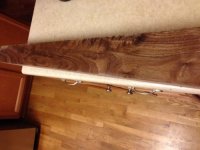Walnut Stock blanks
A buddy has 11 stock blanks like the one in the attachments and was wondering what they would be worth. He cut a tree down and this was the results. Would would a blank like this be worth as I have no idea.
A buddy has 11 stock blanks like the one in the attachments and was wondering what they would be worth. He cut a tree down and this was the results. Would would a blank like this be worth as I have no idea.
Attachments
Last edited:



